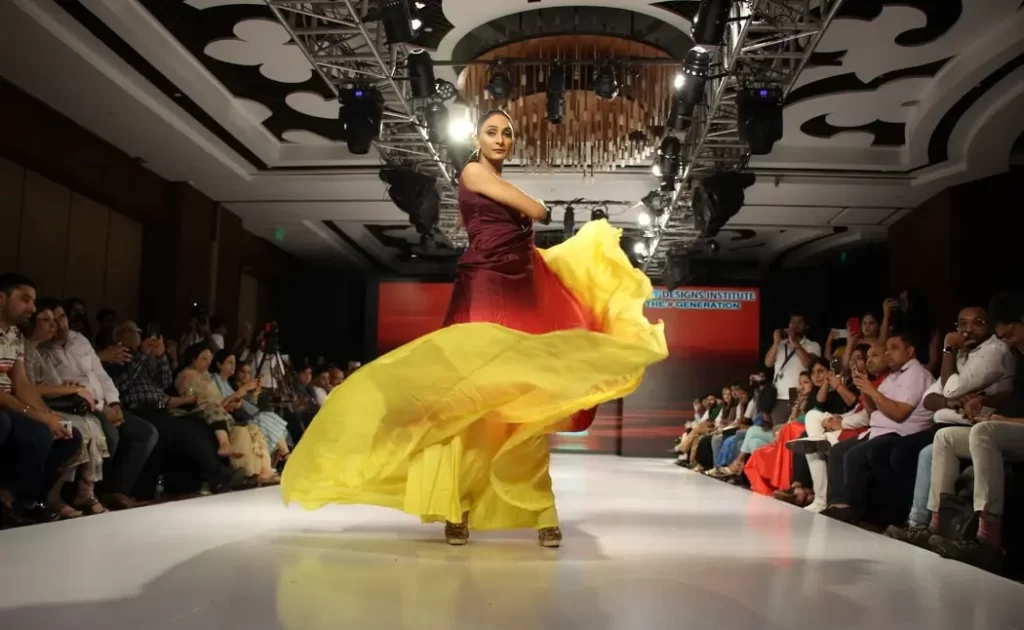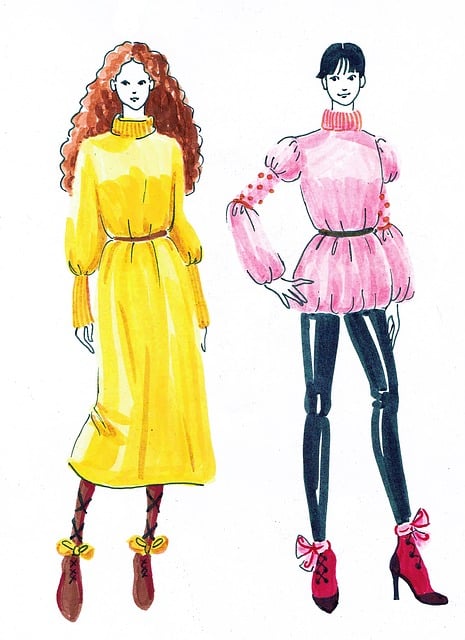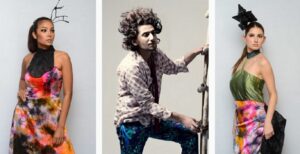Fashion design is a dynamic and creative field that revolves around the art of clothing, ideating innovative concepts for clothes and accessories, using fabric as per weather, research and sewing skills and garment techniques best suited to people from different sections and age groups. Fashion designers get ample opportunities to shape trends, express unique style and statement and influence the way people dress in a particular culture and geography. Read on to know more about diverse career options for fashion designers, creating from haute couture to sustainable fashion, within the ambit of exciting world of fashion.

Overview of Fashion Career Options
- Fashion Designer
- Fashion Illustrator
- Fashion Stylist
- Fashion Merchandiser
- Fashion Buyer
- Patternmaker
- Textile Designer
- Fashion educator
- Fashion Editor
- Fashion Marketing and PR Specialist
- Costume Designer
- Fashion Consultant
- Sustainable Fashion Designer
- Fashion Technologist
- Fashion Entrepreneur
- Fashion Trend Analyst
- Fashion Buyer
Each of these fashion career options offer unique ways to express creativity, innovation, research, opportunities to cater to diverse interests within the world of fashion. Whether you’re drawn to design, business, or technology, garment and sewing merchandising, packaging, there’s a place for you in this dynamic field.

Popular Career Options for Fashion Designers in India
Fashion design is a burgeoning industry in India, known for its rich cultural heritage as well as diverse fashion traditions and trends. Here are popular career options for fashion designers in India:
1. Fashion Designer:
As a fashion designer, you can create your own clothing lines, catering to various market segments. India’s blend of traditional and contemporary styles provides ample inspiration.
2. Textile Designer:
India is renowned for its intricate and a wide range of textiles. Textile designers create unique fabrics and prints, drawing from India’s vibrant heritage and art forms.
3. Fashion Stylist:
Stylists are in high demand for fashion shoots, celebrity styling, event-specific styling, and personal shopping services, helping clients make fashion-forward choices.
Also Read: Course in Fashion Styling
 4. Fashion Illustrator:
4. Fashion Illustrator:
Illustrators play a crucial role in visualizing design concepts, particularly in a garment. Their skills are sought after by designers and fashion houses.
5. Costume Designer:
India’s thriving film, entertainment and glamour industries create opportunities for costume designers to craft outfits for movies, television, ramp walks, fashion shows and theater productions.
6. Fashion Consultant:
Fashion consultants advise individuals or businesses on wardrobe choices, making fashion more accessible and personalized.
7. Fashion Entrepreneur:
India’s growing middle class and e-commerce boom offer opportunities to start your own fashion label or online store.
8. Fashion Educator:
Teaching fashion design at prestigious fashion designing institute in India allows experienced designers to pass on their knowledge and skills to the next generation and budding fashion designers.
9. Fashion Buyer Planner:
Retailers require fashion buyers and planners to select and manage inventory, keep a track on stock taking, thus ensuring the latest trends reach consumers within stipulated time.
10. Fashion Marketing Specialist:
Marketing professionals play a key role in promoting brands, especially with the rise of Indian fashion weeks and events in a given calendar year.
11. Sustainable Fashion Designer:
India’s focus on sustainability and traditional craftsmanship paved a path for rising demand for eco-friendly fashion designers.
12. Wedding Wear Designer:
With grand Indian weddings being a significant market, specializing in bridal wear can be a lucrative niche and a thriving business proposition.
13. Accessory Designer:
Accessory designers create jewelry, bags, and footwear, accessories that complement outfits. They cater to a growing accessory market in India and abroad.
14. Fashion Blogger/Influencer:
The rise of social media has opened doors for fashion enthusiasts to become influencers and bloggers, sharing their style expertise and even get endorsement by fashion labels and brands to promote them through their social media feeds and handles.
15. Fashion Tech Expert:
As technology integrates with fashion, professionals in this niche work on innovations like smart clothing and augmented reality fashion experiences – specifically grabbing the attention of GenZ.
16. Export/Import Business:
India’s textile and garment exports offer opportunities for fashion designers to engage in international trade and exchange activities. This helps in expansion of business and promotion of brands at global level.
17. Fashion Event Manager:
It is considered one of the best career opportunities in fashion industry. Managing fashion shows, exhibitions, ramp walks, fund raising events and so on surely give plethora of opportunities to fashion event manager, especially in cities like Mumbai and Delhi.
18. Fashion Trend Analyst:
India’s diverse culture and evolving fashion scene make it an ideal place for trend analysts to track and predict emerging styles.
In India, the fashion industry is not only about modern trends, but it also denotes preserving traditional craftsmanship. A successful career in Indian fashion design often combines innovation with a deep appreciation for the country’s cultural diversity.
Check Popular Courses in Fashion Offered at IADA:
B.VOC in Fashion Designing | Diploma in Fashion Designing
Career Options after Fashion Designing
Seeking fashion career options can be energizing and fulfilling. A good understanding of job options for fashion designers in India help learners to develop capabilities and necessities of different profiles in fashion industry.
Sales-related careers
Sales associate
Sales associates offer assistance to clients to discover the proper item for them, total exchanges, stock taking, maintaining inventories and a prompt appearance in the retail store. They welcome the visitor as they enter the store, introduce new fashion trends to customers and try to make shoppers’ experience unique and enriching by helping them to get garments of their choice and taste. In case the client is looking for a specific thing, fashion or size, sales associate make best efforts to find the best coordinate.
All through the customer’s shopping experience, the deals associate can begin a fitting room and suggest accessories to go with garments selected by the customer.
Merchandiser
Merchandisers are capable of ensuring the proper items are accessible within the right stores, at the correct time and weather, within the right amounts and set at the suitable cost. They can work in retail stores or for an apparel brand at the corporate level. Corporate merchandisers work with a team of creators and product developers to ensure the plan lifecycle of garments remains visible on track.
Merchandisers work closely with designers to create readymade garments, which are in demand. In case the benefit edges become risky, the merchandiser may ask changes to the fashion or rethink garment’s retail cost to ensure that the brand remains productive.
Inventory manager
Inventory planners start the attire improvement cycle by deciding the amount required of different garments. They review current stock levels, regular needs and geological information to estimate the shopper request and demand for their item category. The inventory planner is additionally capable for apportioning and conveying stock to stock items and stores across the country.
Design-Related Careers
Fashion designer
Fashion designers use innovation and creativity to plan unused styles for their target clients. High-end fashion designers work out more noteworthy inventiveness to create imaginative, unique designs. This is one of the top career options in fashion world.
Textile Designer
Textile designers hand outline or utilize CAD computer programs to make plans that can be printed on or woven into a texture. Material plans are created as rehashes to cover the texture yardage with the plan. Textile designers can work as specialists or for a company, such as a texture producer or clothing brand. They work closely with fashion designers and merchandisers to create garments that suit the clothing styles, season and client. Textile designers conduct research and testing for their items to guarantee their designs are on-trend.
Creative Director
The creative director is mindful of deciding the overarching topic, color palette and styling of an attire or collection in a fashion label. They can work for an brand or fashion magazine. A creative director conducts goes through relevant information to decide what trending colors and styles their clients would like to buy. At the start of each season, they meet with senior originators to set up the color palette, topic, motivation sources and any key plan elements they need to see within the collection. All through advancement, the creative director guarantees the plans are remaining on track and stay relevant at all times.
Product Developer
Product developers direct the attire handle from plan conception to generation completion. They are the attire company’s essential contact with the factory and are dependable for choosing fitting production lines to deliver each item. The product developer handles timeline transactions with the plant. They create or source the fabrics, buttons, zippers and trims that the designers need to produce garments. The item engineer must ensure all materials and the ultimate piece of clothing meet the brand’s quality guidelines.
Technical Designer
The technical designer design piece of clothing and serves as a point of contact between the plan and item improvement groups. The plan group gives the technical designer the inventive vision for each piece of clothing, and they decide what fasteners and sew wrapping up will be utilized. The specialized designer is capable of communicating these sewing subtle elements to the manufacturing plant, in conjunction with the article of clothing estimations. Their primary duty is fitting the articles of clothing when the tests arrive from the plant and revising the estimations, design or sewing strategies as required to form a high-quality, well-fitting piece of clothing.
Production Manager
The production manager is mindful of supervising all components of the article of clothing fabricating handle, counting texture testing, cutting, sewing, packaging of last piece of clothing and bundling. Production managers work in a fabricating plant. They ensure the producers are complying with all lawful and standard protocols. The production manager is also responsible for ensuring that the timeline arranged by the item engineer is met amid generation and shipping. The production manager and item engineer parts can be integrated depending on the company’s structure.
Your choice of career path should match your interests, skills, capability, and aspects of fashion that inspire you. Whether you prefer a creative role, a business-oriented one, or a combination of both, there are diverse opportunities in the fashion industry to explore and create a niche for yourself.




There are many facets to the fashion industry and that positions are not limited to traditional design. Follow your passion, take multiple paths, and locate your specialty in an ever-changing industry!
Some more career options for fashion designer:
– Pattern Cutter/Grader: Develop and adjust patterns for garments.
– Embroidered Designer: Create elaborate fabric embroidered designs.
– Personal Shopper: You can assist your clients to choose outfits and accessories.
You need to know that to work in fashion industry requires creativity and understanding of different styles of clothing. The type of creativity varies depending on the job. The scope of work as fashion designer is very broad. Fashion industry offers a wide variety of career options and this is a field that continues to grow.
With more expertise, you can become a senior designer, the head of a department of fashion, or the director of design. You can branch out into purchasing or marketing in the fashion sector. Gaining business acumen could help you launch your own fashion brand or go freelance. You could instruct pupils in your areas of expertis in colleges. With popularity in fashion industry many career options for fashion designers is open!
Fashion designers, surely, have the best careers nowadays. There is a lot of job options for fashion designers in India and other nations. You can have a career in fashion design with combination of a degree and with practical experience. After gaining experience you can also launch your own business.
An exciting and diverse profession in fashion demands a unique combination of perseverance, creativity, strategic planning, and a dedication. The fashion industry has always been competitive, but in recent years, traditional retail experiences have given way to e-commerce. As the retail landscape changes,I suggest fashion students to be adaptable to these changes as well.
Continued education and skill development are necessary for job advancement in the fashion industry. Study by enrolling in advanced courses, go to seminars, and stay current with market trends. Fashion designing industry offers a variety of job options and it is a growing field. Developing strong network and acquiring a variety of abilities can lead to better role.